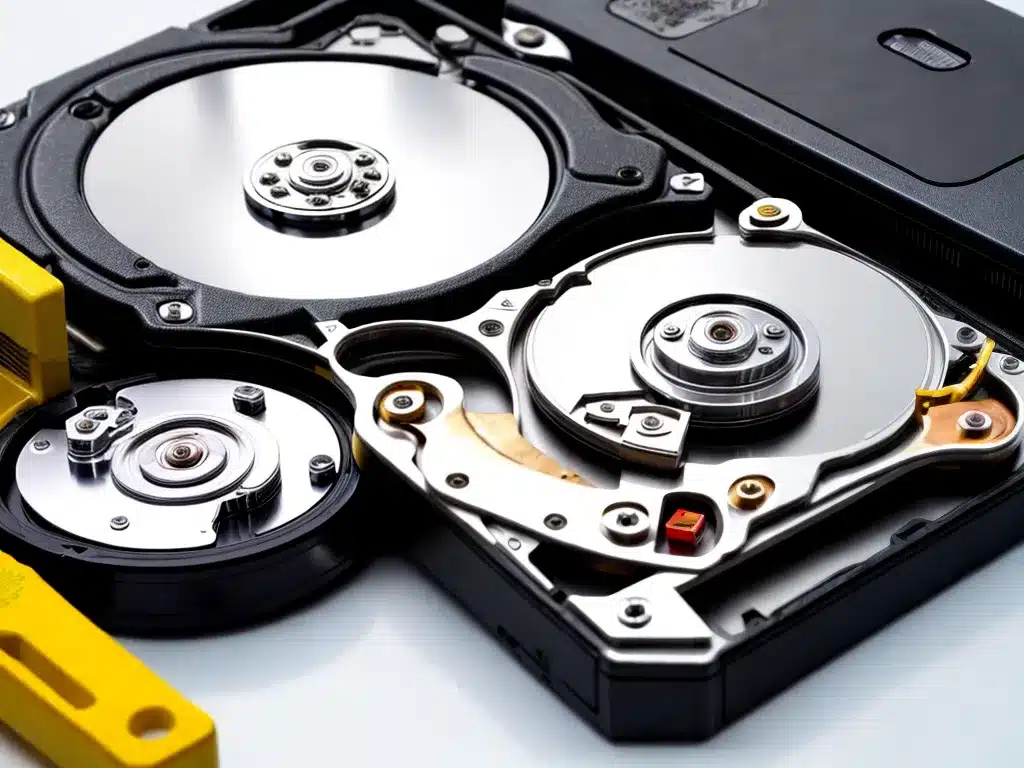
Introduction
Having an external hard drive fail due to physical damage can be extremely stressful. Important personal files and memories may seem lost forever. However, with the right tools and techniques, data recovery is often possible even from severely damaged drives. In this article, I will provide an in-depth look at recovering data from physically damaged external hard drives.
Evaluating the Damage
The first step is to carefully evaluate the extent of the physical damage. Common failure points include:
-
Broken or bent USB connector – Prevents the drive from properly connecting to a computer. May be repairable by replacing the connector.
-
Damaged USB cable – Frayed, cut, or otherwise damaged cable can prevent communication between the drive and computer. Replaceable.
-
External enclosure damage – Cracks, dents, broken clips or screws can sometimes be repaired or worked around.
-
Internal damage – Drops, blows, or shocks can damage internal components like the read/write heads, motor, or controller board. Severity varies.
Ideally, the damage will be limited to an easy-to-replace external component like the USB connector or cable. Extensive internal damage often requires professional data recovery services.
DIY Data Recovery Options
For external drives with minor to moderate damage, I may be able to recover data myself before resorting to professional services. Here are some DIY options:
Bypass the Enclosure
If the external enclosure is damaged but the hard drive inside appears intact, I can remove the drive and connect it directly to a computer internally or via SATA/IDE adapter. This allows me to access the drive by bypassing any damaged components in the enclosure.
Try a Different Enclosure
Similarly, I can try installing the drive from the damaged enclosure into a new, working enclosure if available. This effectively isolates the drive from any damaged components.
Repair Physical Damage
For things like broken USB connectors or damaged power ports, I can attempt repairs with basic tools and soldering skills. Replacing accessible parts like cables and connectors can get the drive functional again.
Imaging and Read-Only Access
If the drive powers on but has electronic issues, I can often still clone it to an image file using software like ddrescue. This allows me to work with the drive read-only without risking further damage.
When to Use a Professional Service
If I exhaust all DIY options without success, or the drive has severe internal damage, engaging a professional data recovery service is the next step. Reputable companies have experience, specialized tools and clean room facilities to disassemble drives and repair internal components. The chances of recovering data are much higher.
The downside is cost – often hundreds or thousands of dollars, especially for mechanically damaged drives. An initial evaluation to determine recoverability and cost is generally free. I must then decide if the data is worth the expense.
Preventing Data Loss
While data recovery is often possible, it’s far better to avoid a failure in the first place. I can mitigate the risk of data loss from physical damage by:
- Always ejecting and disconnecting the drive properly when not in use.
- Using quality external enclosures with impact protection.
- Following manufacturer handling recommendations.
- Avoiding shocks, drops, liquids, etc.
- Backing up important data regularly to a separate location.
Conclusion
Despite severe physical damage, recovering data from external hard drives is very achievable in many cases. By understanding the options from DIY to professional recovery services, I can develop an effective recovery plan. But it’s always wise to be cautious and have good backups, just in case.












